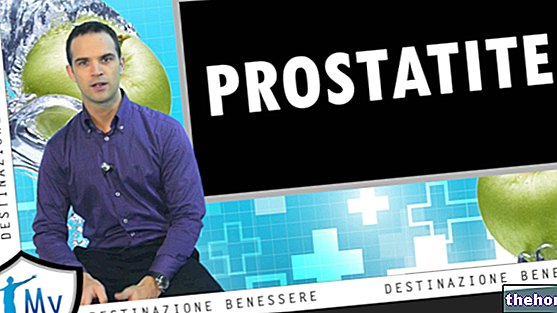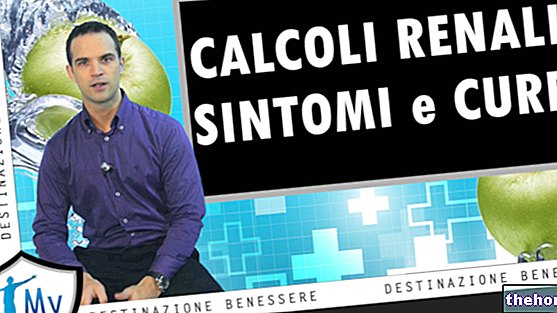In this episode we will talk about a bacterium called Salmonella, responsible for one of the most common gastrointestinal infections in industrialized countries. Just think that this infection, called salmonellosis, affects over 100,000 Europeans every year.
The term Salmonella identifies a group of gram-negative bacteria, which belong to the Enterobacteria family. They are therefore microorganisms that find their ideal habitat in the intestine of reptiles, birds and mammals, including humans. Salmonellae have a rod-like shape and are mobile due to the presence of flagella. They develop well both at room temperature and inside our organism, but they do not tolerate high temperatures and acid pH, lower than 5.5. As far as humans are concerned, there are several bacteria of the genus Salmonella capable of causing infectious diseases, but they are not all equally "aggressive". The main infections affecting humans are divided into two large groups: on the one hand we have the most severe typhoid forms, such as typhoid and paratyphoid fever, while on the other there are the non-typhoid forms, called minor salmonellosis. Typhoid fever. and the paratyphus represent rather serious pathologies, sustained by bacteria Salmonella typhi And Salmonella paratyphi. These infections exclusively affect humans and are widespread above all in developing countries, while they are rare in Italy and industrialized countries. On the other hand, non-typhoid salmonellae, also called "minor salmonella", are more common here. In these cases the manifestations are usually confined to the gastrointestinal level; moreover, the responsible bacteria are not the prerogative of man, but also involve many animals, including those raised for food. In this video we will focus precisely on food infections caused by non-typhoid salmonella.
Salmonellosis is a zoonosis, ie an "infection that can be transmitted from animals to" humans. In particular, it can be transmitted by wild, domestic or farm animals, such as chickens, pigs, cattle, rodents, dogs, cats and chicks. Furthermore, this bacterium is found in the external environment, in water and in feed. Salmonellosis is transmitted via the fecal-oral route, therefore whenever the bacterium manages to somehow reach the oral cavity of a healthy individual from the feces of an infected animal. Salmonella can therefore be contracted through the ingestion of food or drink contaminated, directly or indirectly, by the feces of infected animals or people.
Food is therefore one of the most important vehicles of contagion. A food can be contaminated with salmonellae because it comes from an infected animal or because it has come into contact with the feces of infected animals or people. Such contact can be direct, but also indirect, for example through hands or flies contaminated with fecal residues. However, it should be noted that in order to cause the disease it is necessary that the food is heavily contaminated. The most frequent causes of salmonella toxins are the irregular and incomplete cooking of the food, the too slow cooling and the poor hygienic conditions of those who handle the food. In particular, cross-contamination is frequent, for example between raw and cooked foods, or between meats and vegetables; this contamination occurs as a result of handling and storage errors, for example using the same tools to process raw foods and those already cooked. The fact that the food contaminated with salmonellae does not have abnormal odors or tastes and therefore does not arouse suspicion contributes to facilitating the infection. Salmonellae are more frequently found in foods such as eggs, mayonnaise, unpasteurized milk, poultry, pork, hamburgers, fish and shellfish grown in contaminated waters.
Symptoms of salmonellosis can appear approximately 1-3 days after ingesting contaminated food. This short period is the so-called incubation time, during which salmonellae reproduce in the intestine. Growing in population, salmonellae cause disorders of the gastrointestinal tract, which manifest themselves as nausea, vomiting, abdominal pain and diarrhea. Fever, joint pain, cramps, and headaches are also possible. The intensity of the symptoms described above varies, but the toxin usually resolves within 4-7 days. However, children, the elderly and particularly debilitated individuals can suffer from more serious consequences, including extraintestinal manifestations, such as pneumonia, meningitis, endocarditis and pyelonephritis. If the bacterium manages to spread into the blood, it can also cause a life-threatening infection. The severity of the disease depends on the infecting serotype, the number of ingested microorganisms and factors of resistance to infection. In particular, low levels of gastric acidity favor the engraftment and proliferation of pathogens, with the consequent appearance of diarrhea. In other words, if the bacteria are not neutralized by the acid secretion of the stomach, the organism responds with another mechanism of defense to expel pathogens; this defense consists in the unpleasant but therefore useful diarrheal discharge. Subjects treated with proton pump inhibitor drugs, for example for reflux problems or peptic ulcer, could therefore be more exposed to the salmonellosis risk.
The diagnosis of salmonellosis is confirmed by means of the so-called coproculture, an examination that consists precisely in the culture of a stool sample in the laboratory. Although it is not very attractive, cultivating the microorganisms present in the feces in the laboratory allows to highlight the presence of salmonellae and allows their isolation. Since this is a bacterial infection, one would naturally think that salmonellosis can be cured with antibiotic treatment. In fact, the use of antibiotics is often discouraged since, in most cases, Salmonella gastroenteritis are mild and self-limiting forms, so the symptoms spontaneously subside within a few days. For this reason, the main therapeutic measure is represented by rest and the generous intake of liquids, useful for compensating for the water and salts lost with vomiting and diarrhea. The administration of lactic ferments and probiotics to restore an optimal bacterial flora is also very useful. Antibiotic therapy is reserved only for elderly or immunosuppressed subjects, for children under the age of two and in general in severe infections, with extraintestinal symptoms. Outside of these cases, an unjustified antibiotic treatment, in addition to being useless, could contribute to the phenomena of drug resistance.
Salmonella infections can be avoided by practicing a few simple hygiene measures. These include the correct handling of raw foods, especially those of animal origin, good cooking and careful kitchen hygiene. To decrease the risk of salmonellosis, it is recommended to wash your hands before, during and after food preparation. It should be remembered that a good cooking of foods derived from animals, especially poultry, pork and eggs, reduces the risk of infection, since the bacteria are destroyed by heat. However, it is necessary to remember that salmonellae can pass on tables, hobs, cutlery and plates, and then move from one food to another during the preparation phases. Therefore, the sterilizing effect of the cooking heat is canceled out if, for example , the knife used to cut raw meat is used shortly afterwards to cut cooked meat or raw vegetables ready to eat. Equally dangerous is the habit of breaking eggs, underestimating the potential infectious charge of the shell. For this reason and for avoid bacterial cross contamination, raw foods should be separated from cooked ones.




























